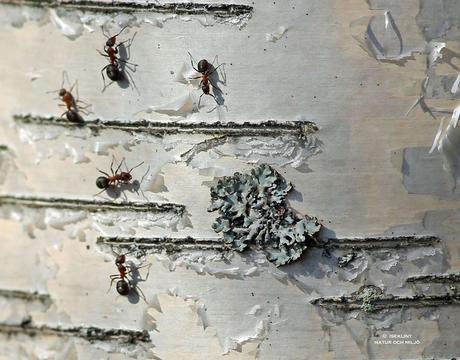To carry something heavy together is tricky.
How would you coordinate the efforts to avoid inefficient tug-of-wars?
Have you ever moved furniture around and ending up wondering why it is so difficult to lift something at the same time and simply carry it down the stairs? Well, it seems like collectively carrying a large load requires a high degree of coordination. And this is something that few species apart from humans and ants actually even try to do.

To align the forces has its advantages but there is a problem if the information is only shared by a couple of the members in group or if there is little available information. Successful teams work together and they share common goals as well as tools. The members in the team may disagree about how to achieve the goals but successful teams find ways and solutions to overcome their differences.
So what is the best way to carry a large load?
Researchers at the Weizmann Institute of Science in Israel found that by working together ants, longhorn crazy ant (Paratrechina longicornis), can transport the food that are heavier than what a single ant could move. The ants that carry the food and the free ants are constantly changing roles.
What can we learn from this observation? Well, perhaps the best results are achieved if we are allowed frequent breaks. Switching roles makes us not only more alert but it also provides us with the chance to see the situation from different perspectives.
Several other studies have been conducted on ants to gain insight into leadership, management and communication. One study examined how carpenter ants (Camponotus fellah) divide and organize their work – individual ants were tagged and continuously monitored over 41 days. The ants had a very orderly career ladder. The ants focused on the task ahead and not on their next role. The ants simply moved from one work group to the next as they got older.
The ants also communicated effectively without some central coordinating facility, or boss, they made decisions based upon local information. Cutting the number of levels and the number of managers makes sense even for ants. This idea can also be seen found in Peter Drucker, management consultant and author, who wrote:
“The best example of a large and successful information-based organization had no middle management at all.”
Admittedly, there are a many differences between ants and humans but the video below highlights some similarities.
This blogpost has also been posted on Blue Think Dive.
